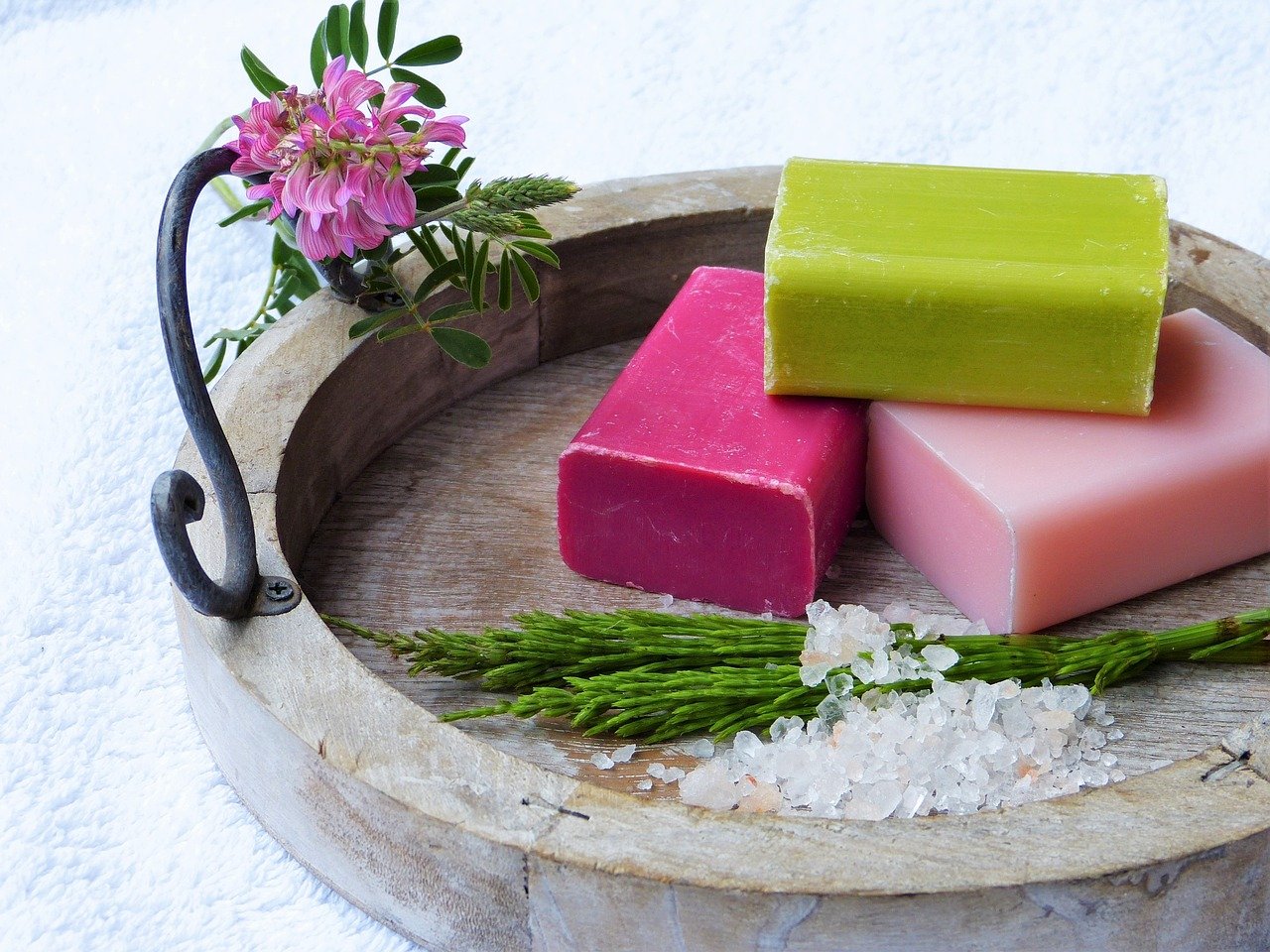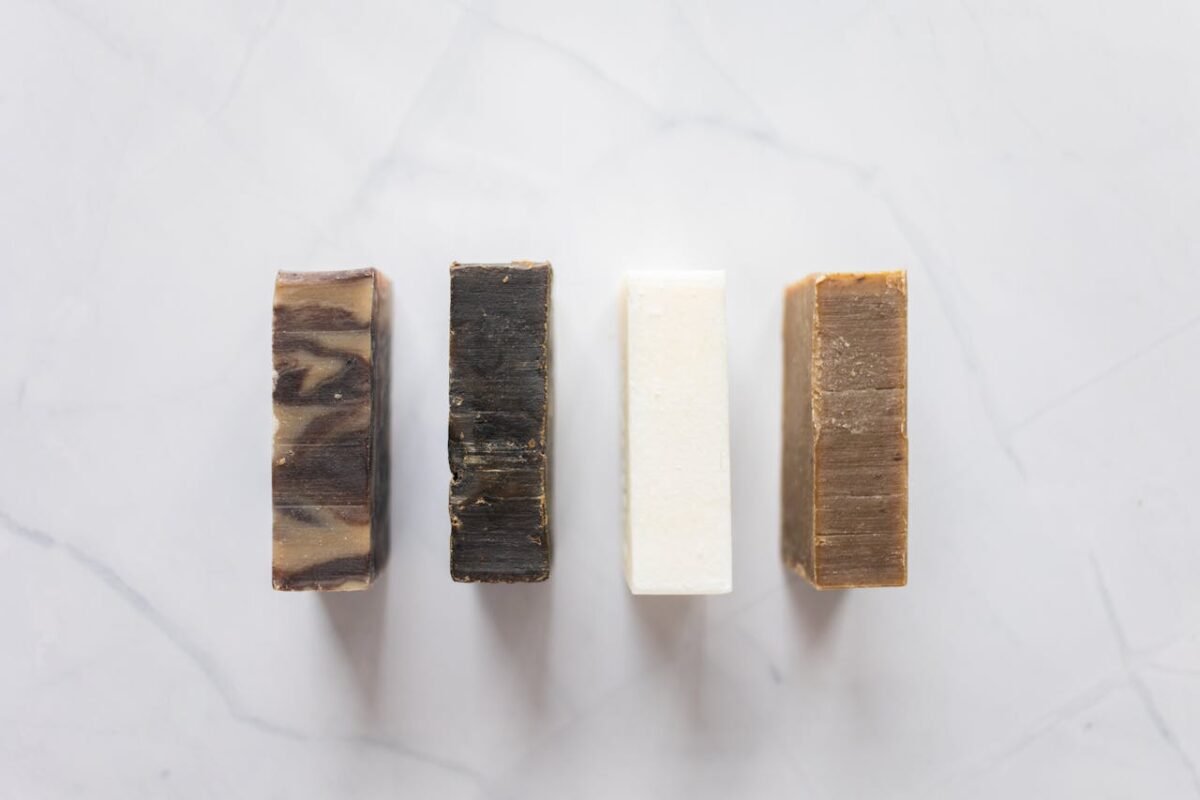Making soap at home is a delightful and creative activity that allows you to craft unique, natural soaps tailored to your skin. In this blog, we’ll embark on an exciting journey into the world of soap. We’ll start with a straightforward guide to making high-quality natural soap at home, followed by exploring the impact of different soaps on your skin and how they can enhance your personal care routine.
Homemade Soap Guide , Simple Steps to High-Quality Natural Soap:
Crafting soap at home is a rewarding experience that gives you control over the ingredients in your final product. Handmade soap can be gentler and more suitable for your skin, and it can be customized to meet your needs and preferences. This guide will walk you through making natural soap at home with clear and simple steps.
- Essential Ingredients:
– Vegetable Oils: Such as olive oil, coconut oil, and castor oil.
– Water: Distilled water is preferred.
– Sodium Hydroxide (Lye): A necessary component for saponification.
– Essential Oils: For natural fragrance (optional).
– Natural Colorants: Like turmeric or cocoa powder (optional).
– Additional Ingredients: Such as shea butter, cocoa butter, oats, honey (optional).
- Required Tools:
– Soap Molds : Silicone or plastic molds can be used.
– Digital Scale: For precise measurement of ingredients.
– Heat-Resistant Container: For mixing the soap.
– Wooden or Silicone Spoon: For stirring the mixture.
– Hand Blender (optional): To speed up saponification.
– Gloves and Safety Goggles: For protection when handling sodium hydroxide.
– Thermometer: To monitor the temperature of the ingredients.
- Detailed Steps for Soap Making:
- Prepare Ingredients and Tools:
- Wear gloves and safety goggles.
- Measure all ingredients accurately using the digital scale.
- Prepare Sodium Hydroxide Solution:
- In a heat-resistant container, add distilled water.
- Slowly and carefully add sodium hydroxide to the water (never the reverse) and stir until completely dissolved. The mixture will heat up significantly, so let it cool to about 37-43°C (98-110°F).
- Heat the Oils:
- In another container, heat the vegetable oils until they reach the same temperature as the sodium hydroxide solution.
- Mix Solution and Oils:
- When both solutions are at the same temperature, slowly pour the sodium hydroxide solution into the oils.
- Stir the mixture with a spoon or hand blender until it reaches a pudding-like consistency. This process is known as “trace.”
- Add Additional Ingredients:
- If desired, add essential oils, natural colorants, or other additional ingredients now and mix well.
- Pour the Mixture into Molds:
- Pour the soap mixture into the prepared molds.
- Tap the molds gently to remove any air bubbles.
- Allow Soap to Set:
- Cover the molds with a towel or blanket and let them sit in a warm place for 24-48 hours until the soap hardens.
- Remove Soap from Molds:
- Once hardened, remove the soap from the molds.
- Cut the soap into bars if necessary.
- Curing Phase:
- Place the soap bars in a well-ventilated area and let them cure for 4-6 weeks. This phase is essential for the excess water to evaporate, resulting in hard, long-lasting bars.
Making soap at home is not only an enjoyable activity but also a great way to ensure you use natural and safe products on your skin. With complete control over the ingredients, you can customize the soap to suit your specific needs and preferences. By following this simple guide, you can now enjoy making high-quality natural soap in the comfort of your home.
Experiences with Different Soaps , Their Impact on Skin and Enhancing Personal Care Routines :
When it comes to choosing the right soap, there is no one-size-fits-all solution. Each skin type requires different ingredients, making it helpful to share personal experiences and insights on various soaps to understand their actual effects on the skin. In this section, we’ll explore diverse experiences with several types of soap, helping you identify the best choice for your skin and improve your personal care routine.
1. My Experience with Castile Soap
- Personal Experience:
When I decided to switch to natural skincare products, I chose Castile soap made from olive oil. After using it for a few weeks, I noticed significant improvement in the softness and hydration of my skin. My sensitive skin, which often got irritated, became much calmer, indicating that Castile soap was gentle enough for daily use on both my face and body.
- Others’ Experiences:
A friend with oily skin found that Castile soap helped regulate the natural oils in her skin without causing excessive dryness.
2. Glycerin Soap Experience :
- Personal Experience:
In search of a highly moisturizing product, I tried glycerin soap, known for its hydrating properties. With daily use, I experienced a substantial improvement in my dry skin, especially during winter. Glycerin soap was gentle and ideal for my dry skin, eliminating the need for post-shower moisturizers.
- Others’ Experiences:
A coworker with eczema found that glycerin soap helped soothe itching and irritation, making it an excellent choice for sensitive and irritated skin.
3. African Black Soap Experience :
- Personal Experience:
When I began to experience breakouts, I decided to try African black soap, known for its antibacterial and anti-inflammatory properties. Shortly after using it, my skin became clearer, and the breakouts reduced significantly. African black soap was not harsh on my skin but helped improve its texture and appearance.
- Others’ Experiences:
An acquaintance with combination skin found that African black soap was excellent for deep cleaning without drying out the drier parts of his face.
4. Goat Milk Soap Experience :
- Personal Experience:
Due to its nourishing benefits, I tried goat milk soap, rich in essential vitamins and minerals. My experience with this soap was fantastic; my skin felt softer and more supple after each use. Goat milk provided deep hydration and a silky feel to my skin.
- Others’ Experiences:
My mother, who has aging skin, noticed that goat milk soap improved her skin’s elasticity and reduced the appearance of wrinkles, making it an ideal choice for mature skin.
5. Homemade Soap Experience :
- Personal Experience:
I once decided to make my own soap using natural ingredients like coconut oil and lavender oil. It was an enjoyable experience, and the result was a smooth soap with a refreshing scent. Using this soap made my skin feel clean and fresh without any irritation.
- Others’ Experiences:
A friend who also tried making homemade soap shared that the process was satisfying and resulted in soap that met his specific needs without the worry of harmful chemicals.
Experiences with different types of soap demonstrate how various ingredients can affect the health and texture of the skin. Sharing these experiences helps guide others toward making informed decisions when selecting the right soap for their skin. Whether you’re looking for extra hydration, deep cleaning, or acne treatment, there is a type of soap that can effectively and safely meet your needs.
As we conclude this exciting journey, we hope you have gained the knowledge and inspiration to create new kinds of natural soap. Enjoy your experiments and benefit from the effects of soap on your skin and personal care routine.





